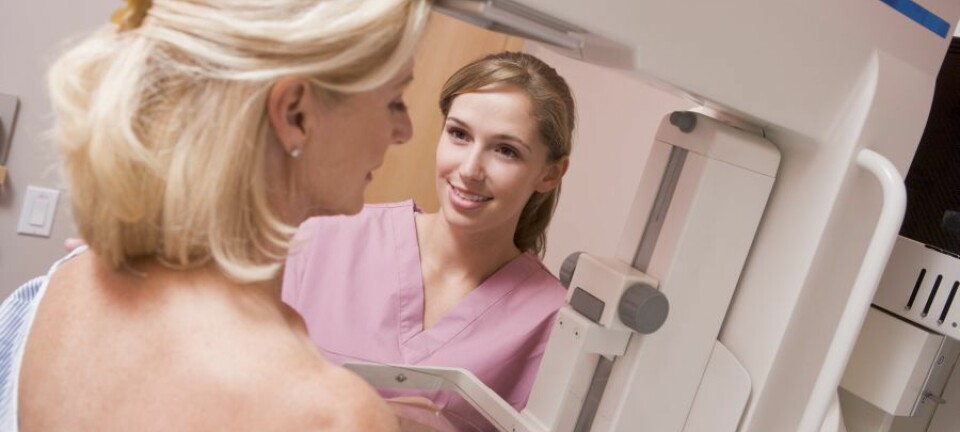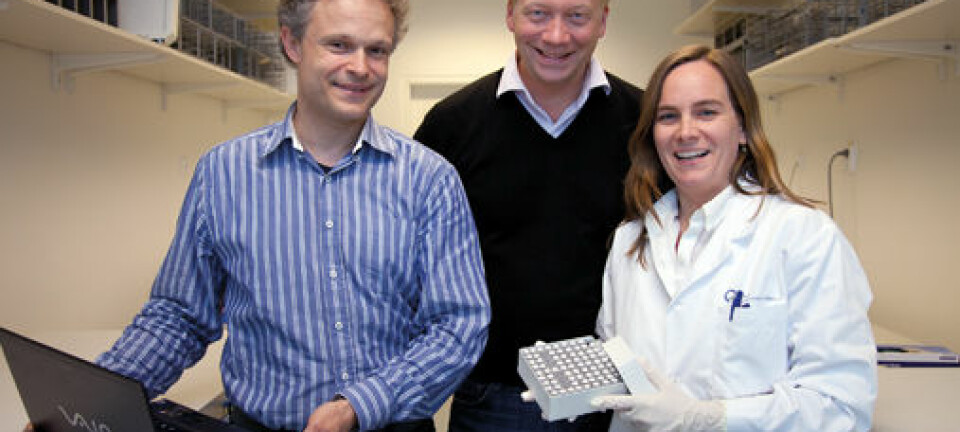
Screening does not prevent aggressive breast cancer
Breast screening does not detect the types of breast cancer that women actually die from sufficiently early, new research reveals. Screening may even lead to overtreatment, which increases the risk of other cancers, argues researcher.
Breast screening aims to detect breast cancer before it spreads through the body and becomes deadly.
However, a new Danish study of Norwegian women’s screening results reveals that breast screening does not detect the aggressive cancers that women actually die from.
It appears that the screening mainly detects the ‘dormant’, or harmless, cancers that develop slowly and are usually not fatal. There is growing consensus that these cancers would never have caused problems or even be detected without screening.
“The objective of breast screening is to prevent the aggressive and deadly types of cancer, but our study shows that the screening only has a minimal effect on the number of women who develop aggressive breast cancer,” says Henrik Støvring, an associate professor at the Department of Public Health at Aarhus University, Denmark.
If the screening had a preventive effect and caught the dangerous types of breast cancer before they spread, we would be seeing a significant decline in the number of women whose cancer has actually managed to spread and thus becomes much harder to treat. But we’re not seeing such a decline.
He is the lead author of the new study, published in the European Journal of Public Health.
Screening leads to overtreatment
The Norwegian Breast Cancer Screening Programme invites all women between 50 and 69 years of age to a breast screening every two years. The programme aims to save lives by catching breast cancer while it is still treatable.
However, the new study shows that the number of Norwegian women who get aggressive and dangerous breast cancers has remained almost unchanged since the Norwegian government introduced the screening programme nationwide in 2005.
”If the screening had a preventive effect and caught the dangerous types of breast cancer before they spread, we would be seeing a significant decline in the number of women whose cancer has actually managed to spread and thus becomes much harder to treat. But we’re not seeing such a decline,” says Støvring.
Breast screening is, at best, a waste of money and, at worst, it leads to overtreatment, which increases the risk of other cancers and cardiovascular diseases.
Before the introduction of the national breast-screening programme in Norway, the annual average number of advanced breast cancer cases was 10.4 per 100,000 Norwegian women.
After the introduction of the screening programme, this figure had gone down to eight per 100,000 women, which is a reduction of 23 percent.
It would appear, then, that screening does detect a few cases of breast cancer before the cancer develops into advanced breast cancer. However, the new study also shows that there is a 27-percent reduction in the same period for women under the age of 50, who are not offered breast screening.
This indicates that the positive figures are not necessarily a result of the screening:
We are spending a lot of resources on finding and treating a harmless form of cancer, while at the same time stressing women and reducing the quality of their lives. This is problematic.
“The modest decline in advanced breast cancer may not have anything to do with the screening at all. Perhaps it is a result of women becoming better at noticing changes in the tissue around their breasts, and perhaps they also lead healthier lives than before,” says Støvring.
Early stages of cancer are detected
Breast screenings are good at detecting the early stages of breast cancer. Since the national screening programme was introduced in Norway, there has been a 121-percent increase in women who are diagnosed with breast cancer that has not spread. However, according to Støvring, many of these women had cancers that may not have spread anyway and are therefore harmless.
“Most of these cancers are probably dormant and develop so slowly that they do not significantly affect the statistics for women with advanced breast cancer,” he says.
”Had these women not been screened, they would probably just have had the cancer in their bodies for the rest of their lives without complications. Instead, they have now received treatment that may well have been unnecessary. The problem is that we cannot say for a specific woman whether her early cancer is harmless or fatal.”
Overtreatment can be lethal
All women with signs of breast cancer are treated, as it is not possible for doctors to determine whether the screening detected a harmless or a dangerous form of breast cancer.
This probably means that a number of women are treated unnecessarily, and this should not be taken lightly, says Karsten Juhl Jørgensen, MD, a researcher at the Nordic Cochrane Centre at the Copenhagen University Hospital. He did not take part in the study, but has researched into the effects of breast screening.
“Breast screening is, at best, a waste of money and, at worst, it leads to overtreatment, which increases the risk of other cancers and cardiovascular diseases,” he says.
Jørgensen believes that as long as the cancer is not harmful to the women, there is no reason to spend money on treatment and expose the women to the psychological stress that comes from knowing that they have cancer.
”Breast screening can in principle also increase mortality in women rather than reduce it, since women with harmless breast cancers can be exposed to chemotherapy and radiation treatment, which increases the risk of other cancers and cardiovascular diseases.”
Screening overlooks aggressive cancers
The reason why screening does not significantly reduce the number of cases of aggressive cancers is that these cancers develop so quickly that they may well break out between the bi-annual screenings, says Jørgensen:
”It is possible that more frequent screenings would have an effect. But when we compare results from the UK, where women are only screened every three years, with results from the US and Sweden, where women are screened every year and every 18 months, respectively, the greatest decline in breast cancer mortality is actually in the UK. This is because the declines are predominantly due to better treatment, not screening.”
Jørgensen is reluctant to be specific about how frequently women should be screened in order for the screening to have an effect:
”The types of cancer that are often detected in breast screening are harmless because they develop so slowly that they never become a problem for the woman,” he says.
“We are spending a lot of resources on finding and treating a harmless form of cancer, while at the same time stressing women and reducing the quality of their lives. This is problematic.”
New findings backed up by research abroad
The findings from the Danish study are backed by comprehensive studies from Switzerland and Canada. Based on the totality of the evidence for breast screening, the Swiss authorities are currently considering whether to abandon their national breast-screening programme for all women.
“The Danish findings are well established by now and the best research is pointing in the same direction. We should therefore act on it and remove the breast screening programmes,” says Jørgensen.
-------------------
Read the Danish version of this article at videnskab.dk
Translated by: Dann Vinther











